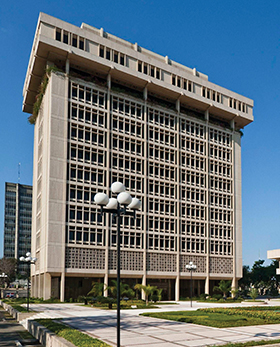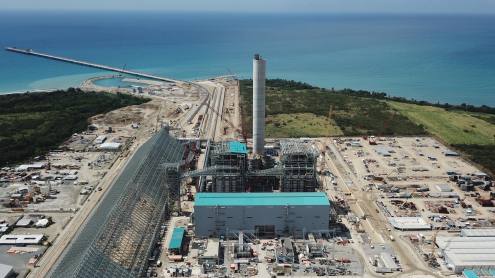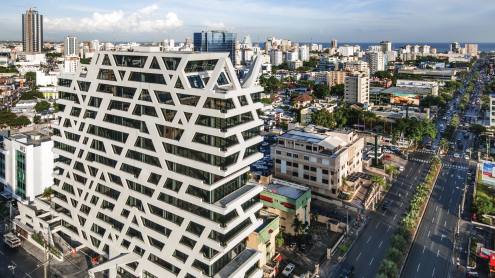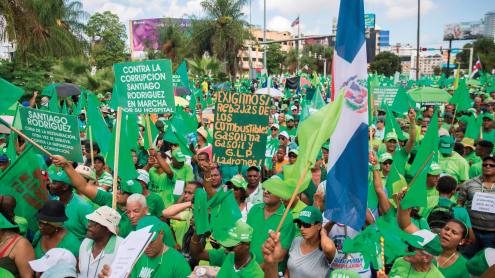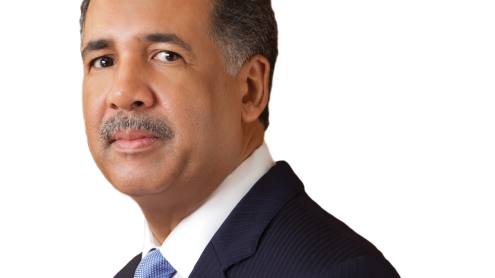The Dominican Republic’s banking system is undergoing a sort of makeover thanks to two recent acquisitions, new legislation and the inevitable changes brought about by technology.
In August 2018, the fourth largest bank in the country, the local business of Canada’s Scotiabank, acquired Banco Dominicano del Progreso, the fifth largest. The deal boosts Scotiabank’s market share to 9%. Then in October, the much smaller Banco Multiple Activo, a Venezuelan subsidiary, announced it would be taking over savings bank Banco de Ahorro y Crédito Banaci. Activo is second smallest of the 18 multiservice lenders in the Dominican system.
The moves, which are still pending approval, do not alter the ranking of top banks, but are a reflection of the confidence in a banking system that continues to consolidate as it grows. According to a recent report, "Fitch expects profitability to remain strong as a result of more dynamic loan growth, low funding costs, reduced impairment charges and better efficiency." Liquidity is also strong, supported by a large, low-cost deposit base, which represents the main funding source.
Following the sovereign
Dominican banks tend to follow the ups and downs of the country’s economy. Happily, there have been mainly ups in the past quarter-century. Banks boomed midway through this decade as the economy accelerated on the back of big investments and low fuel prices. The economy expanded above 7% in 2014 and 2015 and banks' profits grew by double that rate.
Subsequently there was a downturn in 2017 as the sector saw much slower growth. Gross domestic growth (GDP) expansion dropped to 4.6% as natural disasters hit key sectors and corruption scandals dented confidence. The central bank responded to the downturn with monetary easing, which provided the needed boost. A rebound is now under way, with the economy gaining steam and projected to expand by more than 5% in the years remaining in the decade, according to some analysts.
“The central bank responded quickly. It might have overcooked it a little, but it got that under control,” says Andrew Stanners of the UK’s Aberdeen Asset Management. His comment refers to the central bank’s unexpected decision in July to raise its referential interest rate to 5.5%, an increase of 25 basis points, when inflation was going up and reserves down. The rate has remained the same at subsequent monthly meetings through October.
The International Monetary Fund, in its April 2018 consultation with the Dominican Republic, reported that “lower lending rates and stronger credit growth following the easing, combined with higher real wages and employment” had triggered a return to growth.
Best yet to come
Larisa Arteaga, director of Caribbean financial institutions at Fitch Ratings, says she expects the next few years to be positive for the Dominican Republic. “This is going to be a good year for the banking system. Its performance is closely linked to the country’s performance, and the situation is much better,” she says.
All of the country’s indicators, from a boom in the construction sector to a jump in tourist arrivals, are not only feeding GDP, but also providing new opportunities for banking sector expansion. The country’s larger commercial banks are also keen on increasing exposure to small and medium-sized enterprises, the fastest growing segment in the Dominican Republic.
Indeed, the country's banks have enjoyed solid performances of late. Total assets of full-service banks were $26.77bn in June 2017, increasing to $29.02bn a year later. Loans are increasing across the board, with a promising trend in commercial loans (reversing the trend of the previous boom when consumer lending was the leader). Also significant is the fact that past-due accounts have remained at the same rate, and the level of dollarisation of the system has not increased, according to Fitch.
Banreservas leads the way
State-owned Banreservas is the dominant player in the Dominican Republic, cornering 31.4% of the country's banking assets. It is in the midst of a strategy to better deal with the changing market, providing differentiated products for each segment. “Banreservas has an advantage associated with managing the state’s accounts and those of public entities, [but] its principal strengths are its consolidated position as a leader in the banking sector, the broad diversification of its sources of financing and its favourable liquidity,” says Carolina Ghiglino, an analyst at Chile’s rating agency Feller Rate.
Feller’s June report, however, pointed out that Banreservas has a higher concentration in commercial loans – 65.9% compared with the total system at 61.9%. “The institution has an important presence in personal loans, both for consumption and mortgages. However, its loans are relatively concentrated on the commercial side,” says the report.
Feller Rate reaffirmed Banreservas’s AA+ rating with a 'stable' outlook in its most recent evaluation in June. It has been at this level now since April 2016. Fitch reaffirmed its AA+ rating at the same time.
Scotiabank’s acquisition of Progreso, while not a threat to the leading position held by Banreservas, concentrates the country's banking market further. Following Banreservas in total assets is Banco Popular with 27.4%, BHB León with 18.7% and now Scotiabank with 9%, according to the Superintendency of Banks. This means 13 smaller banks hold the remaining 13.5% of assets in the full-service sector.
Ms Arteaga says while there might be room in the market for additional players, breaking into it would take time and would be costly. “Some banks have looked at getting in and, while there is room, I think the trend might be for further consolidation,” she adds.
A changing market
Activo’s acquisition of Banaci could be an indication of how the market might change. It would also help deal with one of the risk issues raised in a September report on the country’s new Anti-money Laundering and Terrorist Financing Act (AML/CFT) by the Finance Action Task Force of Latin America, known as Gafilat.
Discussions have been ongoing for a long time about the role and oversight of savings banks and similar institutions. It is a politically sensitive subject given the sheer number of institutions and clients. Ms Arteaga says the overall system would benefit if consolidation occurred, with multiservice banks taking over smaller financial institutions.
In its review of asset laundering policies in the Dominican Republic, Gafilat reported that there were 916 lower tier financial institutions in the country, including savings and credit institutions and small players offering multiple services and attending to a broad spectrum of niches, from agriculture to work-specific co-operatives. They serve more than 1.9 million customers and control assets of over $2.3bn.
The Gafilat review highlights the risks of dirty money making its way through these institutions. Feller’s Ms Ghiglino sees these institutions as having the toughest time falling fully in line with the AML/CFT rules. “While [all] banks have had to invest to meet new compliance standards, these measures have had a much greater impact on the small institutions. Their investments have been much greater in terms of their operational costs,” she says.
More regulations, more hoops
Meeting AML/CFT regulations also requires more work on the part of banks. Loan procedures are more complicated, requiring additional information, and it takes much longer for approvals as authorities demand many more details.
Alfredo Guzmán, a partner at law firm Guzmán Ariza, says car businesses have been particularly affected. Vehicles costing more than $10,400 can no longer be paid for in cash. He says the requirement for proof of payment has dampened vehicle sales, particularly high-end vehicles.
“The issue is not money obtained illegally or from unknown sources, but undeclared income. Proof of payment through the financial system means purchases can be tracked and compared with taxes,” says Mr Guzmán.
Ms Arteaga agrees the changes have created more red tape and slowed down approval process for consumer and corporate loans alike, but she says they were necessary and a few more changes would not be bad if they make the system more resilient. “The changes have added time and bureaucracy, but in the end have increased transparency and that was needed,” she says.
She adds that more changes to the system as a whole would be desirable to meet higher international standards and that it would be good for the Superintendency of Banks to include indicators for capital and liquidity in these efforts: “This is not yet in the pipeline, but it is something that rating agencies would be happy to see,” she says.
But while the Dominican banking system moves closer to international standards, it should also keep up with the changes introduced to the sector by technology and fintechs. “The opportunities today are in digital banking,” says Ms Arteaga. Banks that update their platforms and products – whether big or small – will have a better chance of competing in the local market.



